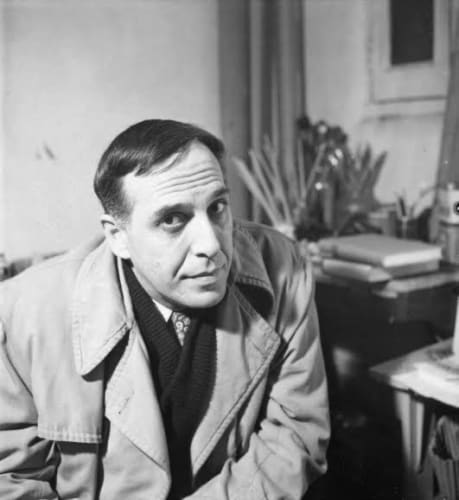"In art you always work between opposites. Between stopping and going, stasis and movement, abstraction and figuration."
Born to Jewish immigrant parents, Philip Guston (b. 1913, Montreal, Canada; d. Woodstock, NY) emerged as one of the most influential and unflinching voices in 20th-century American painting. Largely self-taught, he briefly studied at the Otis Art Institute before forging a path that would bridge the visual language of comic strips, the gravitas of Renaissance painting, and the raw immediacy of contemporary politics.
Guston's early fascination with cartoons and comic books laid the foundation for a lifelong exploration of draftsmanship, figuration, and abstraction. In the early 1930s, a formative trip to Mexico introduced him to the politically charged murals of the Mexican Muralist movement, whose social realism and anti-war themes would leave a lasting impact on the artist’s commitment to socially engaged art. During the same decade, he joined the Works Progress Administration (WPA), creating political public murals influenced by both European masters and Mexican painters, working in fresco and oil.
Relocating to New York in 1936 at the invitation of his childhood friend Jackson Pollock, Guston became part of the burgeoning New York School. Though he continued mural work into the early 1940s, he gradually shifted toward easel painting, using a visual vocabulary that synthesized abstraction, mythology, and realism. By the early 1950s, Guston fully embraced abstraction, drawing inspiration from Mondrian, Chinese calligraphy, and Buddhism. Lyrical abstraction was his primary mode of expression until the late 1960s. Devoted to abstraction for 16 years, Guston produced shimmering works painted in thick, short strokes using small brushes and creamy pigments. He worked close to the canvas, often working spontaneously without a predetermined plan.
Amidst the social and political upheaval of the 1960s, Guston made a dramatic return to figuration. His 1970 exhibition at Marlborough Gallery marked a radical departure from his previous abstract oeuvre: these raw, cartoon-like canvases were populated by hooded figures, cyclopean heads, disembodied limbs, and everyday objects. These images functioned as scathing condemnations of violence, complicity, and political hypocrisy.
Until he passed in 1980, Guston continued to explore the boundaries between the personal and the political, the comedic and the tragic. Many of his late works deal with the role of the artist and incorporate elements of abstractions, exploring existentialism and psychology. These deeply human paintings cemented his status as an artist of unrelenting honesty and relevance.
